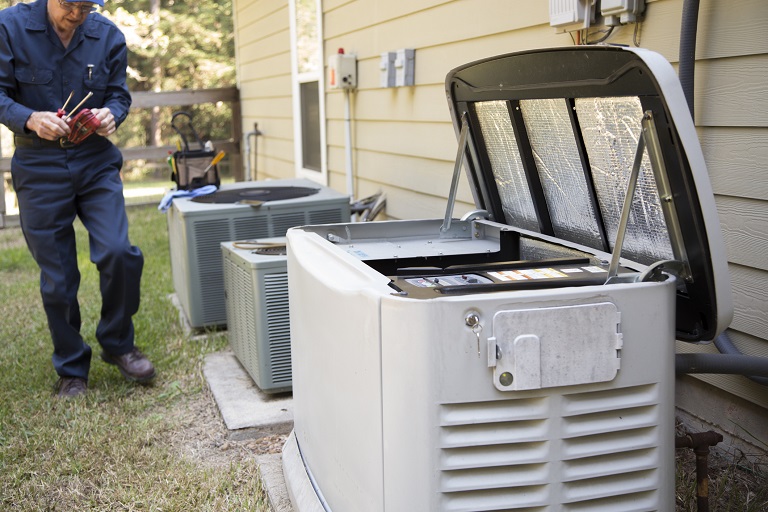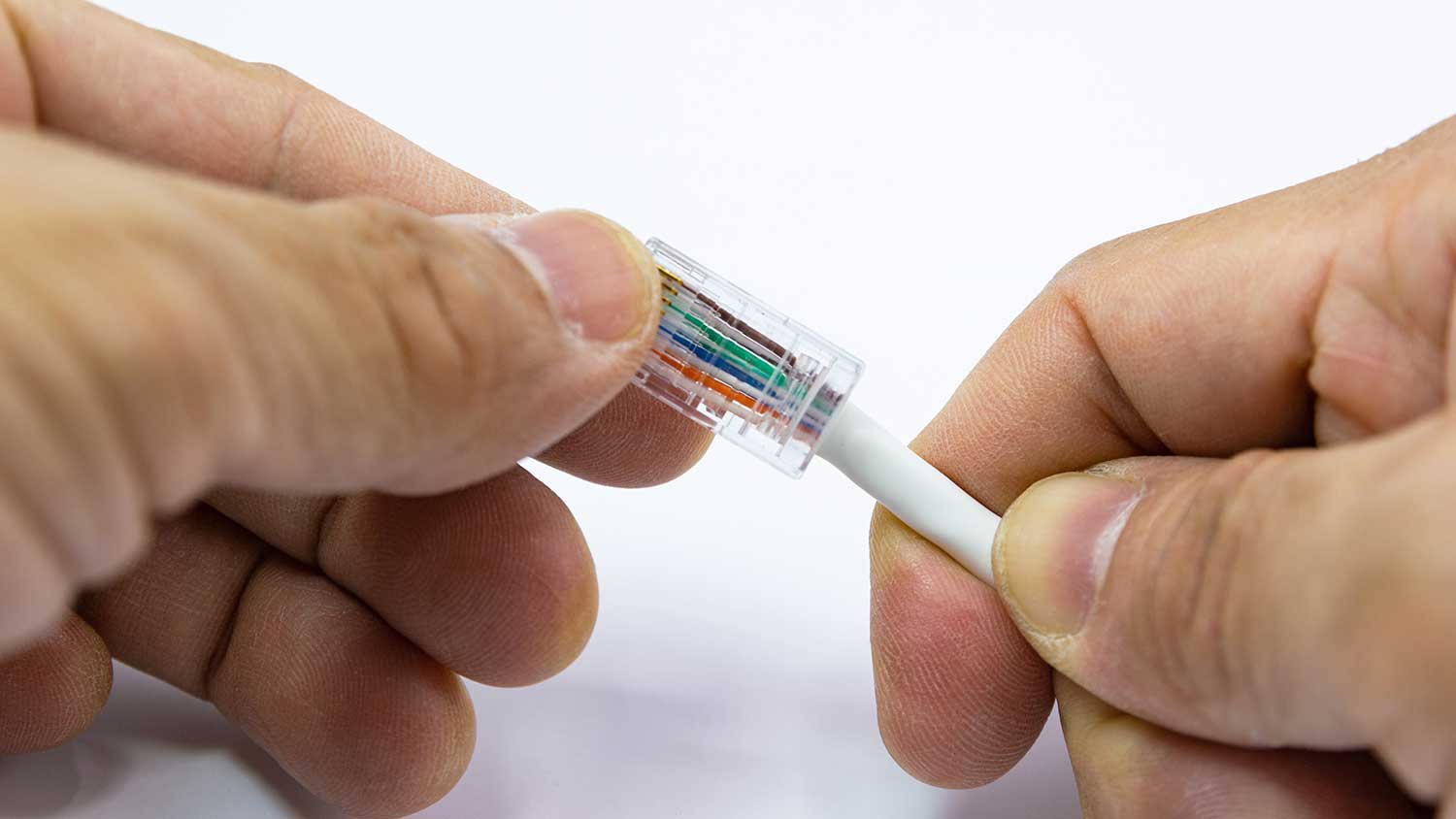
Unsure who can fix a generator? Learn whether to hire a generator technician or electrician and what affects repair costs—start your search now.
Coaxial outlet installation costs an average of $210


The average cost to install a coax outlet ranges from $75 to $500, with most homeowners spending an average of $210.
The number of outlets, installation type, and labor are key cost factors.
Proper installation reduces visible wiring and enhances connectivity.
Hiring a professional ensures safety, code compliance, and efficient setup.
Bundling multiple electrical tasks can lower overall labor costs.
This article was updated using automation technology and thoroughly reviewed for accuracy by HomeAdvisor Editor Ryan Noonan.
The cost to install a coax outlet averages between $75 and $500, with an average total of $210. The price is influenced by factors like the number of cables, installation type, and labor. Replacements can be as low as $60. Budgeting for professional help is important in ensuring that your coax cable and outlet are installed properly.
A cable outlet located far from where you're installing a new television can be a problem for homeowners. You may not want to have cables running all over your home, so you're considering getting a new outlet installed. Below, we explain what the project involves, the factors that influence price, and how to plan your budget.
Coaxial cable was invented in the early 1900s and reliably transmits data. Common uses for coaxial cable include cable television, telephone lines, and internet connections. The distinct feature of coaxial cable is its special shielding, which prevents interference and environmental damage from reaching the copper core. With up to 10 layers of shielding, insulation, and protection, this design makes it significantly more reliable than standard cables, making it a good choice for applications that require a consistent and accurate signal transition.
Coaxial cables come in a variety of sizes, with larger cables being used for longer distances to prevent transmission loss. The two most common coaxial cable sizes are RG-6 and RG-11. RG is short for ‘radio grade,’ though it’s sometimes referred to as ‘radio frequency’ (RF) instead. RG-6 is a smaller cable and is used for lengths of 150 feet or less. RG-11 is used for lengths above 150 feet, as it has increased performance and reduced data loss over longer distances.
There are a few cost factors to consider when setting the budget for coaxial outlet installation, such as the number of outlets you want, the accessibility of the area, and labor.
To install a new outlet, your local electrician will need to run cables through your walls, cut into the wall to create space for the outlet, and connect everything accordingly. Because each additional outlet requires more time and materials, installing multiple outlets will increase your overall project cost. While the materials will only cost a few dollars, the other costs, such as labor, to install an outlet will add up when you need multiple outlets.
To install a new cable outlet, you may need to run cables behind the walls to the access spot if they aren't already there. The farther the existing cables are from the new outlet—and the harder that path is to reach—the longer the installation will take and the higher the labor charge will be.
If there's already an outlet and all you need to do is replace it, this will significantly reduce your price, costing an average of $60 to replace an old outlet. Your electrician should be able to replace an old coaxial outlet in about 30 minutes.
Instead of adding another outlet, a pro can run a new length of coax from an existing jack, tucked along a baseboard or through an attic, for $60 to $150. Choosing this option costs less than opening the wall for a brand-new box, and an experienced electrician will secure the cable so it stays out of sight. If you plan to run cables for longer distances or want them to run through floors or exterior walls, your costs may increase.
The cost to hire an electrician is the main cost factor for installing a new coaxial cable outlet. It costs $50 to $100 per hour to hire an electrician for general work, such as installing a cable outlet, but most electricians charge a minimum call-out fee of one to two hours. It may take two to four hours for an electrician to install a new coax cable outlet.
Coaxial and fiber optic cables are both capable of transmitting video, audio, and other kinds of data, but they have unique pros and cons that you’ll need to consider when choosing between them.
Because coaxial cable is so durable and relatively inexpensive, it’s a common choice for any data transfer job that doesn’t require high-capacity transmission. Fiber optic and coaxial cables both eventually need a signal repeater to prevent data loss over long distances, with fiber optic cables needing far fewer repeaters than coaxial cables.
For projects that require higher data capacities and faster transitions, fiber optic cables are the top choice. Fiber optic cables can transmit much more data over much longer distances with less data loss. For this reason, fiber optic is much more expensive and is often reserved for professional data networks or to connect large units, such as apartment or office buildings. For a single home, a coaxial cable will probably be sufficient.
Although fiber optic has a higher up-front cost than coaxial cables, it tends to have a longer lifespan, meaning it can save you money in the long run while also providing higher transfer speeds. Coaxial cables tend to be less expensive to install than fiber optic cables, but they may need to be replaced sooner. Bear in mind that costs for fiber internet service also tend to be higher than coaxial connections (because of the higher data capacity and speed), so you’ll need to factor in those costs when choosing between these two connection types.
Installing coaxial cable outlets can increase the value of your home somewhat, especially when you consider the low cost of this project. Most people no longer feel strongly about cable television or landline phones, but coaxial cables can also be used to connect your router to a wireless internet connection, making them a valuable addition for almost anyone. Coaxial cable outlets certainly can’t lower the value of your home, so there’s no real downside to taking on this quick, inexpensive project.
Installing coaxial cable outlets is quite a low-cost project, but there are a few ways you can make it even more affordable:
Bundle other small electrical jobs—like replacing a light switch or adding a standard outlet—into the same service call to make the most of the electrician’s minimum fee.
Whenever you can, reuse the existing cable run or add a surface-mounted line instead of cutting in a brand-new outlet—both options generally cost less than opening the wall for new hardware.
Place your new outlet somewhere it will remain useful, helping to avoid the need for another installation if you decide to move your TV or Wi-Fi router.
No place is more important than your home, which is why HomeAdvisor connects homeowners with local pros to transform their houses into homes they love. To help homeowners prepare for their next project, HomeAdvisor provides readers with accurate cost data and follows strict editorial guidelines. After a project is complete, we survey real customers about the costs to develop the pricing data you see, so you can make the best decisions for you and your home. We pair this data with research from reputable sources, including the U.S. Bureau of Labor Statistics, academic journals, market studies, and interviews with industry experts—all to ensure our prices reflect real-world projects.
From average costs to expert advice, get all the answers you need to get your job done.

Unsure who can fix a generator? Learn whether to hire a generator technician or electrician and what affects repair costs—start your search now.

Wondering who can install recessed lighting? See who to hire, other pro options, steps, and costs to plan your project confidently.

Who can run ethernet cable through walls? Learn whether to hire an electrician or general contractor, what to expect, and how pros get it done.

Learn who to call for electrical problems—electrician or power company—and when to get help. See pro steps, safety tips, and hiring guidance.

Discover why a hot tub electrician is the best choice for safe hot tub electrical installation. See costs, steps, and pro options so you know who to call.

Learn everything you need to know about generator repair in this complete guide.